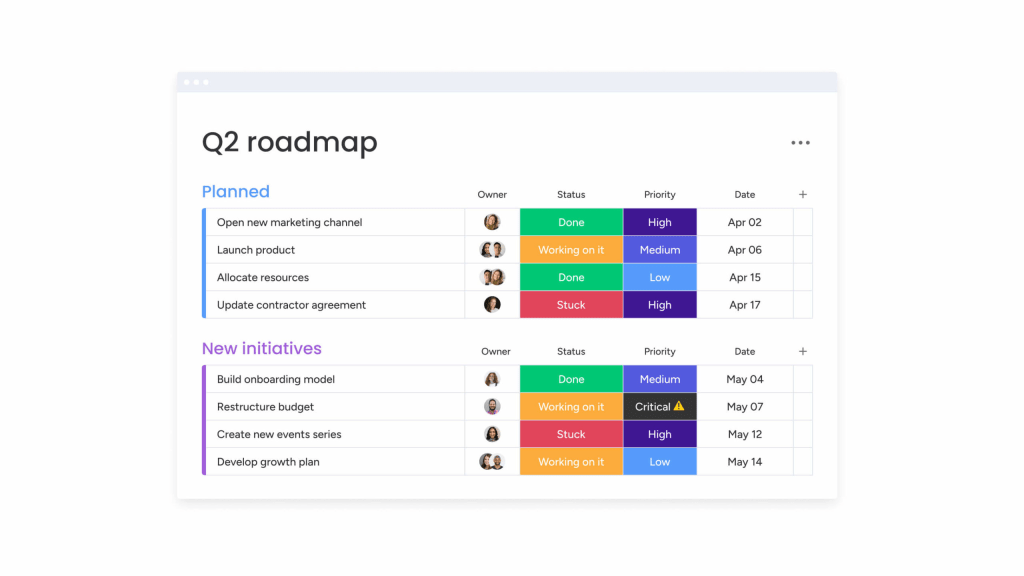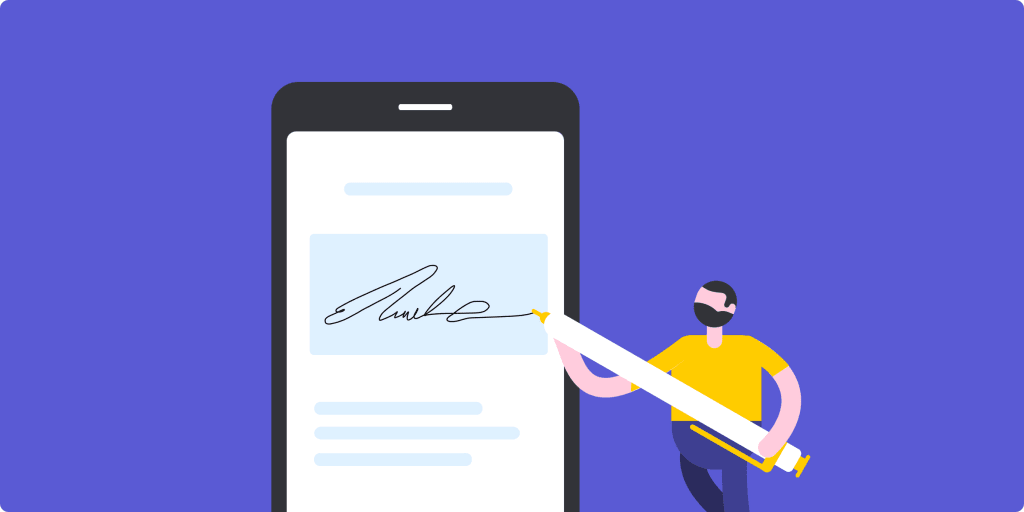When one romantic partner proposes to the other, they give themselves the best chance of receiving the “Yes” they’re hoping for. They might create the perfect mood by going to a special location, buying a sparkling ring, and rehearsing some meaningful words to say. They want their efforts to resonate with their loved one.
Although marriage engagements and project proposals seem worlds apart, the process is surprisingly similar—they both hinge on putting in the prep work to secure an eager approval. This guide shows you how to write a persuasive project proposal from start to finish, six different types of proposals, and how to manage your proposals and everything project-related on monday.com.
What is a project proposal?
A project proposal is a document that outlines the details of a proposed project, such as scope, timeline, and budget. Project managers typically use it to persuade potential stakeholders or sponsors to fund, support, or approve the project.
The goal of a project proposal is to clearly communicate your project idea and convince others that it is worth investing time, resources, and money into. This is an important task, since organizations only win 44% of their requests for proposals, according to Loopio research.
What are the different types of project proposals?
Before you start writing, the six project proposal formats below will guide your approach based on your proposal’s goals, audience, and whether you’re competing against other companies:
Solicited
A solicited proposal is a response to a formal Request for Proposal (RFP.) In this scenario, the company requesting the proposal has most likely asked a variety of companies to send a proposal in, and they’ll select their preference from a range of offers.
A professional and persuasive proposal is essential to outline why you’re the best fit for the project.
Unsolicited
Unsolicited proposals go hand in hand with cold pitching where you send an uninvited proposal to a company you’d love to work with as part of your professional outreach. Writing these proposals is challenging as you must guess the company’s pain points before describing how your project will solve them.
Informal
Informal pitches occur without a formal RFP. A client might send you a casual email or direct message asking for a pitch. This informal type of proposal might be suitable if this is someone you’ve worked with previously or as a pre-vetted referral from an existing contact.
Renewal
Renewal proposals are a chance to extend your relationship with an existing client you’ve previously or are currently working with. Typically, you’ll present your progress and success metrics to justify why the project should renew.
Continuation
Continuation proposals are quick to write and provide an update about your project and progress details to an existing client, any upcoming milestones, and potential roadblocks to consider.
Supplemental
Supplemental proposals focus on one specific aspect of the project rather than the entire project itself. You might reach out to a specific stakeholder to present a case for more funding or resources for an additional part of the project.
How to write a project proposal
An effective project proposal includes plenty of scope for creativity and individuality, showcasing why you are the best person or company to handle the workload. Delivering the completed successful proposal usually involves working through a series of core steps, as follows:
1. Create an executive summary
The executive summary is your bottom line up front. Acting as the introduction to your proposal, it gets straight to the point and briefly touches on:
- The problem your project will address
- The solution you plan to implement
- The overall impact of your project
2. Outline the project background
Describing the pain points your project will solve reminds the project recipient about the current situation to justify why your project is essential. Include details such as:
- What you know and understand about the problem
- What they have already tried to overcome it
- What other competitors are doing to solve similar problems
For example, if your project is to design a new website, you might outline current issues with the company’s existing site, such as outdated design and poor user experience. To make your proposal even more compelling, explain how the UX has resulted in low ecommerce sales and high bounce rates.
3. Provide a solution to the project’s pain point
After outlining the problem, it’s time to showcase your creativity and expertise by explaining how your project will solve the pain point in a way that sets you apart from competitors. You should include:
- The project management methodology you plan to use
- Expected outcomes and results
- Potential risks and challenges and how you plan to mitigate them
- Case studies involving similar projects and the results you’ve produced
In the website project example, you could detail your user-centric approach to creating a modern and visually appealing site, while highlighting how it’ll improve conversions and user engagement. You might highlight your team of experienced web designers who can handle any potential design challenges that may arise. Or that you have a thorough testing process in place to ensure the site meets all necessary technical standards.
4. Define your project goals and deliverables
Any stakeholder reading your proposal should understand exactly what they’ll receive in return for their investment, whether a new process, service, or product. Include:
- Specific project goals and objectives
- Measurable success criteria post-project
- A detailed timeline for each phase of development and project completion
5. List your required resources
Project managers require specific resources to achieve their goals. These include:
- Personnel: Who is responsible (and available) for the project, and what are their roles? Consider including bios to highlight relevant skills, experience, and qualifications.
- Tools, materials, and technology: What software, equipment, or materials do you need to complete the project? Ensure they align with industry standards and best practices.
- Budget: Offer a detailed breakdown of costs for each resource required to complete the project. This information shows transparency and helps stakeholders understand where their investment is going.
On this last point, Webflow developer Darren Sims suggests providing a range of pricing options for stakeholders to review, based on his recent experience:
“Sent out a proposal for a webflow project recently and made the mistake of not providing two or three pricing options. I knew it at the time, but was just keen to get the proposal out. I felt like I’d been spending too much time agonizing over the wording. Thankfully, the client isn’t put off, but would like another couple options to consider. Gold, silver, bronze—as they put it.”
6. Summarize your project proposal
The final step is to condense your proposal into a concise but persuasive summary with a call to action to contact you. This will serve as a final recap for stakeholders, while also providing an opportunity to remind them why they should choose you and your project.
Tips for writing a project proposal
Along with following the process above, consider these best practices to ensure your project proposal resonates with the recipients you’re presenting it to:
- Know your audience: Tailor your language, tone, and content to the specific stakeholders you’re presenting to. For example, if you’re pitching to a technical team, use industry-specific terminology and focus on technical details rather than high-level business benefits.
- Showcase your expertise: Highlight relevant experience, qualifications, and case studies demonstrating your ability to complete the project successfully.
- Use visuals: Images or representations such as graphs, charts, or mockups convey complex information in a more digestible format.
- Proofread and edit: Ensure your proposal is free of grammatical or spelling errors, and check that the formatting is consistent throughout the document to produce a polished and professional finish.
- Customize each proposal: While a template is a useful foundation, always tailor your proposal to the specific project and stakeholders involved so it doesn’t look generic.
Manage your project proposal process with monday.com
Whether you’re managing a single project proposal or need to track a whole range of RFPs, monday.com offers a centralized platform to keep everything streamlined. Here’s how:
- monday workdocs: Organize and track your project proposals using team comments, task assignments, and to-do lists. It’s easy to turn text into action items in just a few clicks.

- Project launch plan: Visualize your entire project roadmap from proposal acceptance to project completion.

- Collaboration: Keep key stakeholders informed about proposal or project updates using board updates, comments, or pulling in conversations from Slack, Outlook, Gmail, or similar.

- Templates: Use our built-in, customizable templates as a foundation for your own project workflows. For example, we offer a Project Requests and Approvals template to manage real-time notifications on project statuses.

- Customizable views: Track RFPs, conversations, project goals, and more by tailoring the monday.com Work OS dashboard to present the information that matters most to your project teams. Choose from 27+ views, 36+ columns, and 25+ widgets to build the perfect data display.

Win more projects with compelling project proposals
Crafting the perfect project proposal is the first step to project success. Get it wrong, and your plans could stall before they begin. Get it right, and you’ll have a clear plan of action, an aligned team, and stakeholders invested in your project’s success.
Ready to use a powerful platform to manage RFPs, project goals, team collaboration, and more? Get started with a free trial of monday.com today.
Get started with monday.com

